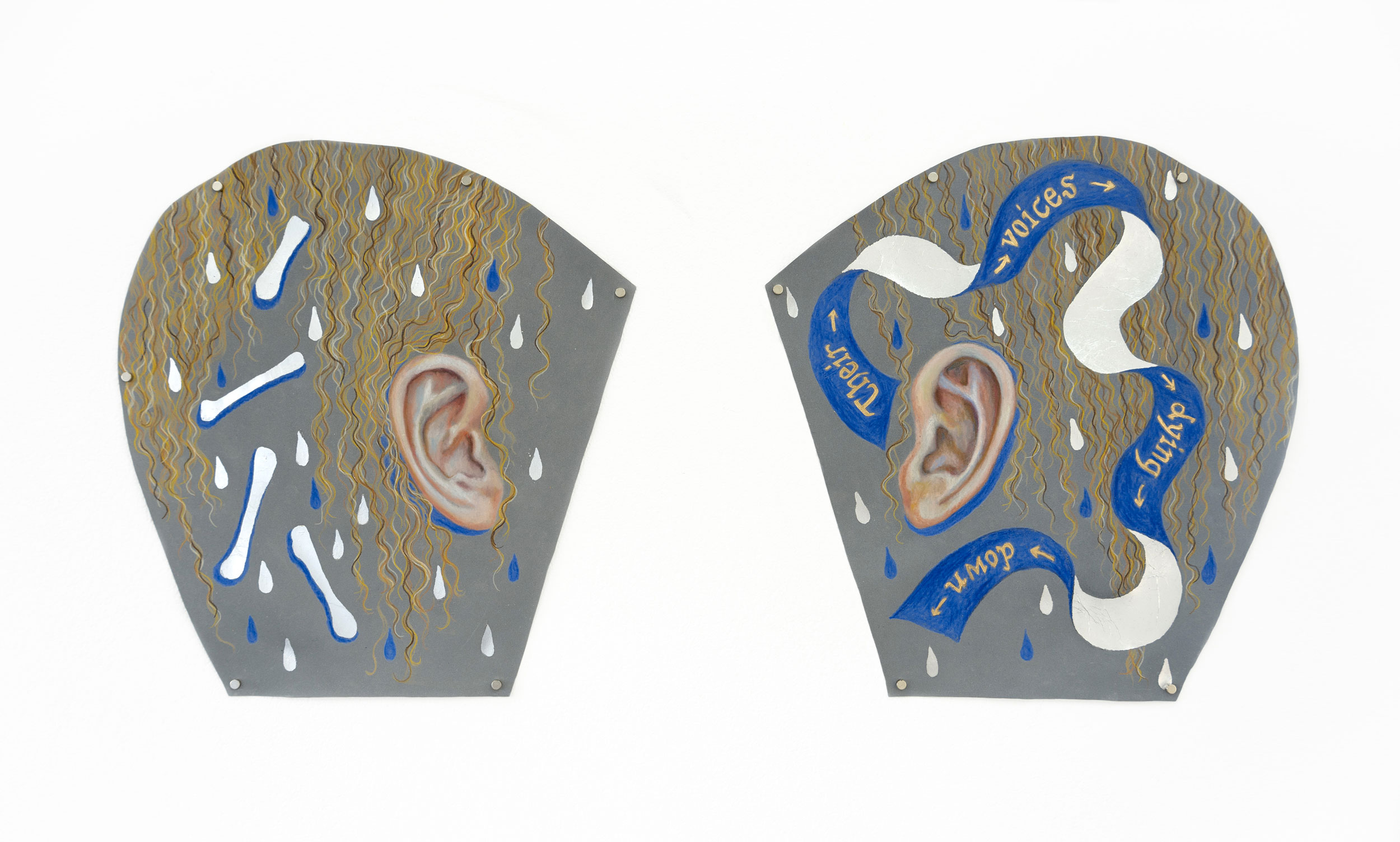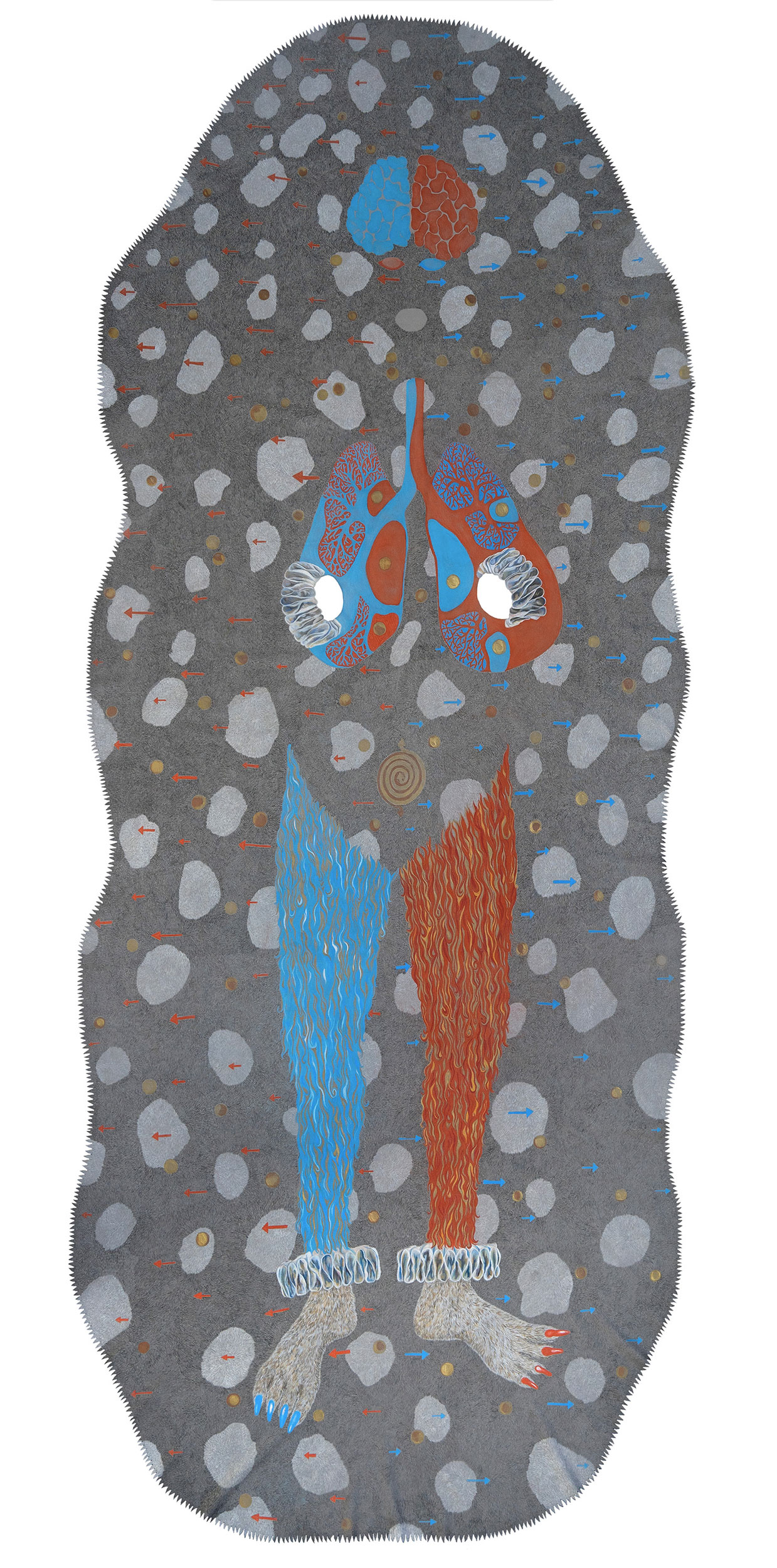DES BAINS, London
Lara Smithson
DES BAINS proposes a solo presentation of drawings on paper and fabric by Lara Smithson.
The investigation for this series of work was consolidated during Smithson’s recent residency at St John’s College, Oxford. During this post she extensively examined Medieval and Early Renaissance medical manuscripts in the Bodleian with medievalists, scientists, and scholars. Smithson’s examinations into these archival systems during this period, allowed her to explore questions of agency, ethics, and ecology.
In As Sewn to the Earth (2023) the fabric pattern pieces were adapted from clothing found at Herjolfsnæs, a Norse settlement on Kalaallit Nunaat (Greenland), during an archaeological dig in 1921. The textiles found date back to the 11th/12th century where the clothes acted as coffins in place of wood. In effect they are burial shrouds, worn through life and death.
Detritus (2022) resembles the tombstones found on the floors of churches across Europe, where the bodies of the dead are carved into the stones above them. Here, the unembodied dress is surrounded by ears walnut fragments, beads, and scraps of text on paper. This text has been used expansively during Smithson’s practice, for example in the film Unnamed Saint (2022) where it details the dismemberment of the land as a consequence of the relic trade.
In Shroud #2 (2021) is part of a triptych where three wearable coverings exaggerate different directions of the mind and body. The work references a therapy (Eye Movement Desensitisation and reprocessing) used to treat PTSD by stimulating alternate sides of the body through movement. The viewer’s eyes are guided by the arrows in the drawings back and forth mirroring the movements that EDMR patients would make during their sessions.
The reflective nature of this work under flash is like the effect of an x-ray. Shroud #2 represents a scaled body whilst simultaneously opening anatomical sections. This hiding and revealing alludes back to examples of Italian art that deal with revelation, not just in biblical stories but in its use of mandorlas, curtains, and veils. Historically shrouds were used in Christian art as signs to allude to what lies beyond the visible.







